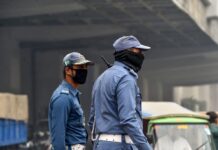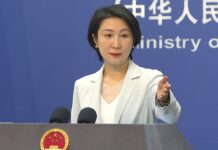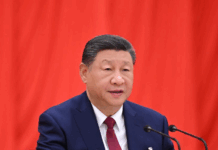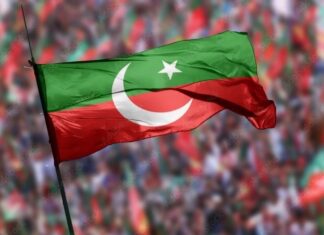Pakistan’s less than four-month-old government is taking a two-pronged approach to stabilizing the country’s long-troubled economy. It is engaged in protracted negotiations with the International Monetary Fund (IMF) to secure a loan of at least $6 billion to boost its external debt servicing capacity. At the same time, Islamabad is trying to shore up its economy and deal with the long-standing threat of bankruptcy with the help of its Gulf allies, especially Saudi Arabia and the United Arab Emirates, through external financing.
The USA used to be the most important source of foreign direct investment and bilateral aid to Pakistan. However, over the past decade, China has increased its investment in the country, mainly in the form of loans rather than grants. Beijing stepped in to meet Islamabad’s energy and infrastructure needs at a time when Pakistan was facing a decline in US and multilateral support. The fact that China has now become Pakistan’s largest bilateral creditor is a cause for concern not only for the USA but also for Pakistan itself. The USA is suspicious of China’s use of loans to expand its influence in South Asia, and Pakistani policymakers seem wary of risking everything on one endeavour. Trying to improve its relationship with the USA without undermining the growing relationship with China is a tough balancing act not only for Pakistan but also for many other countries in this era of increasing power competition.
In this broader context, Pakistan is trying to diversify its options by strengthening economic ties with Saudi Arabia and the United Arab Emirates. Riyadh and Abu Dhabi have long been allies of Islamabad, and over the years, they have helped keep its economy afloat. Saudi aid has been substantial while Emirati aid has been more modest in comparison, especially during difficult periods, such as Pakistan’s wars with India in 1965 and 1971.
Saudi Arabia also provided a financial lifeline to Pakistan after it declared itself a nuclear power in 1998. After India’s nuclear tests, Pakistan faced immense international pressure and threats of sanctions to stop it from testing its weapons. The Saudis have continued to offer deferred oil financing to Pakistan in recent years. Additionally, the United Arab Emirates, along with China and Saudi Arabia, has given billions of dollars in loans to Pakistan to avoid bankruptcy.
Relations between Pakistan and the Gulf states have expanded beyond financial cooperation to include trade, investment and public relations. The UAE has become the second-largest exporter to Pakistan, while Saudi Arabia is the fifth-largest source of petroleum exports. Both Saudi Arabia and the United Arab Emirates have long been important for Pakistani workers. An estimated 2.6 million Pakistanis live in Saudi Arabia and another 1.7 million in the UAE. Saudi Arabia is also the largest source of remittances for Pakistan, followed by the United Arab Emirates.
The fact that a member of the Sharif family is once again in the prime ministership improves Pakistan’s chances of strengthening its ties with the Gulf States. The Sharif family managed to form a coalition government in March after the February elections, despite the popularity of ousted and imprisoned former Prime Minister Imran Khan. The Sharifs have longstanding ties with the Saudis and Emiratis. In addition to helping the Nawaz Sharif-led government move forward and confront US sanctions after its nuclear tests, Saudi Arabia also provided personal aid to the Sharif family. After Gen Pervez Musharraf overthrew and arrested Nawaz Sharif, the Saudis intervened to secure his release and sheltered him and many of his family members from 2000 to 2007.
Prime Minister Shahbaz Sharif has already visited Saudi Arabia twice after becoming Prime Minister. He also went on an official visit to the United Arab Emirates in early May. Prime Minister Shahbaz Sharif’s visit to Saudi Arabia prompted a delegation of several Saudi companies to visit Pakistan in early May, including those in information technology, renewable energy and tourism.
Unfortunately, decades of US aid and technical advice to Pakistan have failed to overcome the elite’s grip and have instead exacerbated it. Chinese energy and infrastructure investments in Pakistan have done little to provide much-needed microeconomic stimulus. It seems unlikely that profit-driven investment by the Gulf kingdoms will provide meaningful opportunities for ordinary Pakistanis or help stabilize the economy and maintain a shaky coalition government.
About $5 billion worth of investment opportunities can be found in various sectors. A $5 billion edible oil joint venture is also being speculated about. Although these projects promise a lot, the actual extent of Saudi investment in Pakistan will be confirmed if the funds begin to flow. Despite several announcements about Saudi plans to invest in a $10 billion oil refinery in the deep-sea port city of Gwadar, there is little evidence to indicate that the plan will be implemented.
Despite positive economic indicators such as reduced inflation and increased foreign reserves, Pakistan faces challenges in achieving sustainable growth amidst a high debt-to-GDP ratio and substantial debt servicing costs. The country aims to attract more foreign investment, particularly through initiatives like the China-Pakistan Economic Corridor, despite administrative hurdles and security concerns.
Like China and the USA before them, Saudi Arabia and the United Arab Emirates see their economic investments in Pakistan as tools to achieve foreign policy goals. Both countries are emerging as key players in the multipolar world system, part of a group of middle powers that are becoming increasingly assertive globally. They use their financial power to leverage advantages in strategically important regions such as South Asia. Nuclear powers like India and Pakistan are also looking to expand their ties with the UAE and Saudi Arabia to diversify their investor base and reduce vulnerability to great power machinations.
India, with its huge market and rapidly growing economy, is an attractive partner for foreign investors. Meanwhile, the Pakistani establishment and ruling elite continue to leverage their strategic and personal ties with the Gulf States to attract investment. The Sharif government has expressed a preference for co-investment from Gulf companies rather than acquiring additional loans, aiming to strengthen the country’s economy and put it on a more sustainable footing.
Investors from the Gulf States appear to be interested in higher yield, lower risk returns rather than long-term investments in Pakistan. Potential investments from Saudi Arabia and the UAE could provide the government with much-needed revenue. Pakistan has established a Special Investment Facilitation Council (SIFC) to promote FDI and increase investor confidence. The SIFC was created after the fall of Imran Khan’s government in June 2023, when the military establishment began consolidating its already significant influence in the country’s political economy. While the Prime Minister chairs this high-level committee, the armed forces are also represented, along with several federal and provincial ministers and relevant bureaucrats. The military justifies its involvement in the council, as it did with the earlier Special Authority to Accelerate Chinese Investment in Pakistan, on the basis that it needs to ensure the protection of foreign investors.
The military’s direct intervention in economic affairs is troubling to many who are unhappy with Pakistan’s prevailing hybrid governance model, which consists of post-colonial, unrepresentative and authoritarian state institutions. These institutions, along with the elites, rule over marginalized people who depend on their patronage.
Unfortunately, decades of US aid and technical advice to Pakistan have failed to overcome the elite’s grip and have instead exacerbated it. Chinese energy and infrastructure investments in Pakistan have done little to provide much-needed microeconomic stimulus. It seems unlikely that profit-driven investment by the Gulf kingdoms will provide meaningful opportunities for ordinary Pakistanis or help stabilize the economy and maintain a shaky coalition government.























